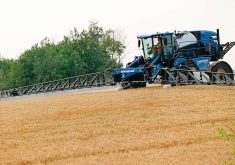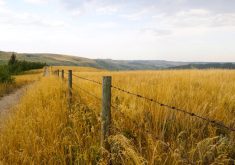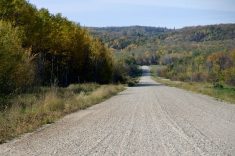There are two ways to get a horse to carry a heavy load. You can hit it with a big stick, or you can provide a reward for work well done.
Think of agriculture as the horse and government sustainability goals as the load that farmers are being asked to carry. Too often, governments reach for the regulatory stick rather than providing incentives for positive action, even though the incentive-based path will lead to greater success.
Agriculture and Agri-Food Canada just wrapped up consultations on a new sustainable agricultural strategy.
Read Also

Canada dragging feet on drone regulations
Canada has spent five years developing regulation and labels for drone spraying, farmers and chemical manufacturers want a clearer pathway.
We are now at a crossroads as a country. We can either choose to accomplish our sustainability goals through an incentive-based approach, rooted in collaboration and partnership, or a punitive, top-down process that relies on the regulatory stick — which will, in turn, generate acrimony and reduce our nation’s competitiveness.
The first step in a collaborative, incentive-based approach would be recognition that farmers are already partners in the development of best management practices that have generated significant gains on key sustainability benchmarks like nutrient management, water quality and greenhouse gas reductions.
For example, Manitoba’s hog farmers now inject or incorporate 90 per cent of manure used as fertilizer. Manure is only applied after soil testing determines the correct rate of application for the crop being grown. These management practices help minimize the potential for nutrient leaching, ensure the nutrient value of manure is used to its maximum potential and helps lower greenhouse gas emissions.
Other changes, like the adoption of more energy-efficient buildings, can also reduce energy use, costs and greenhouse gas emissions. Advancements in sustainable farming practices have been made across all sectors of agriculture, including conservation tillage and grazing practices that mimic natural ecosystems.
Before farmers are asked to further advance national sustainability objectives, it is important to recognize what they are already doing.
Policy makers want to see a greater number of farmers adopt new technology and management practices that they hope — and hope is a key word — will generate positive environmental outcomes.
Farmers are already voracious consumers of technology. For example, hog farmers can monitor and control the temperature and ventilation in their hog barns from their phones. Advances such as global positioning systems, geographic information systems, electromagnetic flow meters, and radar and ultrasonic speed sensors are helping farmers more precisely apply manure where nutrients are needed.
Technology is changing all sectors of agriculture. My dad’s first combine had no cab or even a seat, while a modern combine cab looks like the cockpit of a passenger jet. We do not have to convince farmers to accept technology. Rather, they need to see that new approaches will actually work.
New technology does not always function as expected. New production practices may have unanticipated consequences and unknown costs. Asking farmers to move further on the technology adoption curve is not realistic unless these risks can be mitigated.
This should be a key element of governmental sustainability efforts: mitigating the risks taken on by farmers who are early adopters. Again, the focus needs to be on the incentive rather than the regulatory stick.
Often these regulations either require farmers to do things that do not make economic sense, prevent them from carrying out business practices that would maximize their earning potential or set targets or limits for emissions. Reduction targets in nitrous oxide emissions from nitrogen fertilizer is an example of the latter.
Attempting to reach sustainability goals through regulations will reduce the competitiveness and fiscal sustainability of farming in Canada. Further, the regulatory approach will turn farmers from being partners in the sustainability journey into opponents of government.
Unfortunately, governments’ default position is often ‘more regulation.’ This must be avoided if agriculture is to be a driver of Canada’s economy and if it is to continue as an international leader and innovator in production practices.
The collaborative, incentive-based approach is not necessarily an easy path for governments to take. Canada is a large, diverse country, and innovative practices that drive fiscal and environmental sustainability in P.E.I. may fall flat, for example, in Saskatchewan. There must be enough flexibility in approach to account for differences in climate, soils and ecosystems across Canada. Provincial and local governments need to be engaged when determining which new practices and technology will work in a specific region.
The path that is chosen — the carrot or the stick — is really a test of how seriously governments take advancing social, economic and environmental sustainability.
If they choose the carrot, we will see positive outcomes. If they choose the stick, they are more likely interested in the politics of being seen trying to advance the file, rather than actually facilitating progress.
– Cam Dahl is the general manager of the Manitoba Pork Council















